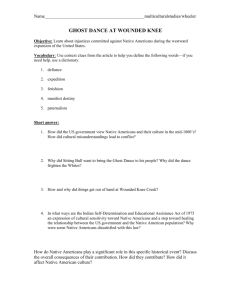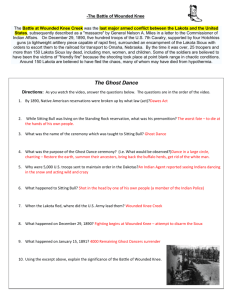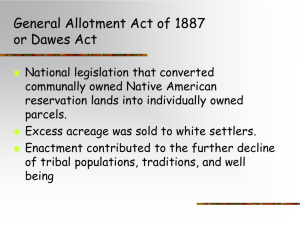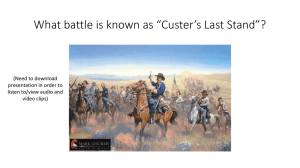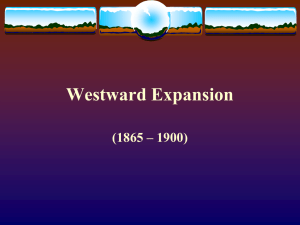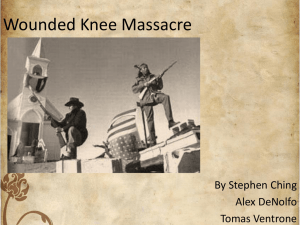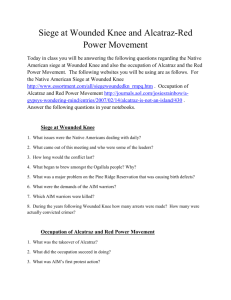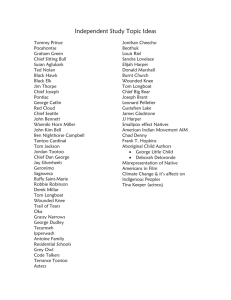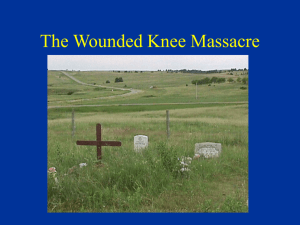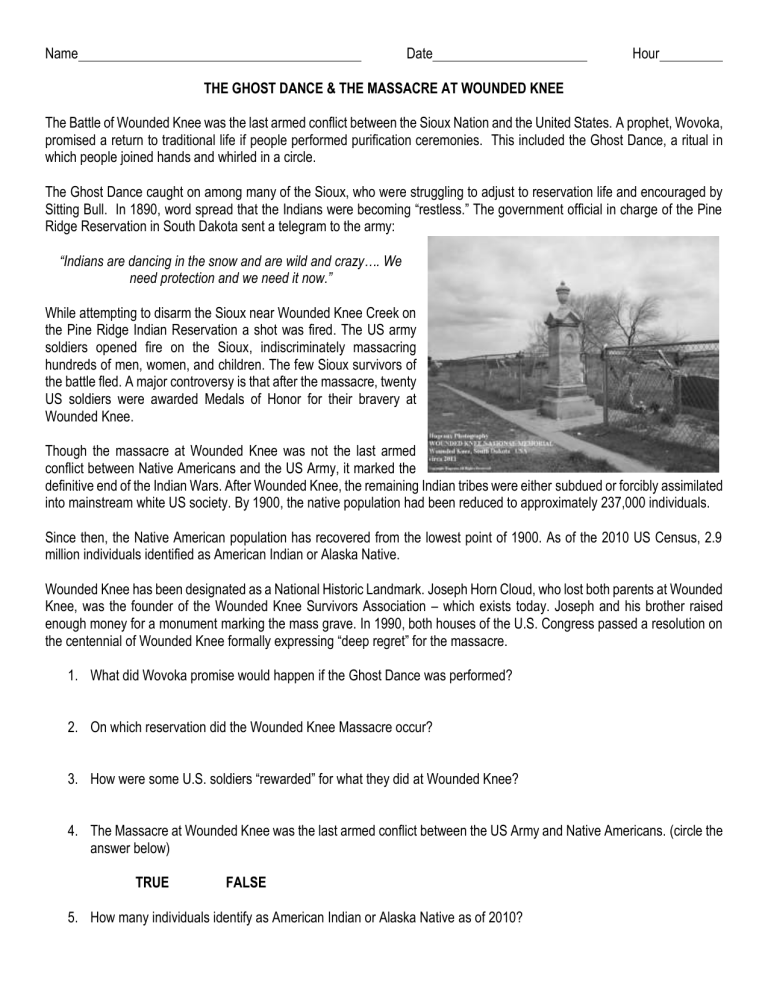
Name Date Hour THE GHOST DANCE & THE MASSACRE AT WOUNDED KNEE The Battle of Wounded Knee was the last armed conflict between the Sioux Nation and the United States. A prophet, Wovoka, promised a return to traditional life if people performed purification ceremonies. This included the Ghost Dance, a ritual in which people joined hands and whirled in a circle. The Ghost Dance caught on among many of the Sioux, who were struggling to adjust to reservation life and encouraged by Sitting Bull. In 1890, word spread that the Indians were becoming “restless.” The government official in charge of the Pine Ridge Reservation in South Dakota sent a telegram to the army: “Indians are dancing in the snow and are wild and crazy…. We need protection and we need it now.” While attempting to disarm the Sioux near Wounded Knee Creek on the Pine Ridge Indian Reservation a shot was fired. The US army soldiers opened fire on the Sioux, indiscriminately massacring hundreds of men, women, and children. The few Sioux survivors of the battle fled. A major controversy is that after the massacre, twenty US soldiers were awarded Medals of Honor for their bravery at Wounded Knee. Though the massacre at Wounded Knee was not the last armed conflict between Native Americans and the US Army, it marked the definitive end of the Indian Wars. After Wounded Knee, the remaining Indian tribes were either subdued or forcibly assimilated into mainstream white US society. By 1900, the native population had been reduced to approximately 237,000 individuals. Since then, the Native American population has recovered from the lowest point of 1900. As of the 2010 US Census, 2.9 million individuals identified as American Indian or Alaska Native. Wounded Knee has been designated as a National Historic Landmark. Joseph Horn Cloud, who lost both parents at Wounded Knee, was the founder of the Wounded Knee Survivors Association – which exists today. Joseph and his brother raised enough money for a monument marking the mass grave. In 1990, both houses of the U.S. Congress passed a resolution on the centennial of Wounded Knee formally expressing “deep regret” for the massacre. 1. What did Wovoka promise would happen if the Ghost Dance was performed? 2. On which reservation did the Wounded Knee Massacre occur? 3. How were some U.S. soldiers “rewarded” for what they did at Wounded Knee? 4. The Massacre at Wounded Knee was the last armed conflict between the US Army and Native Americans. (circle the answer below) TRUE FALSE 5. How many individuals identify as American Indian or Alaska Native as of 2010?
